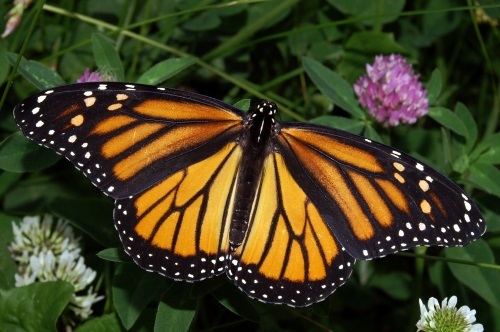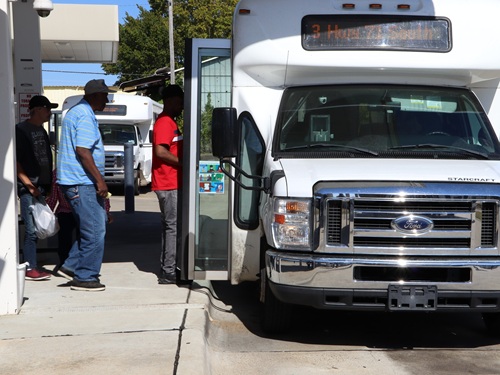The Virginia Department of Transportation said it plans to install 135 new acres of pollinator habitats in 2024 as part of its ongoing commitment to protect the valuable ecosystem provided by pollinators such as bees, birds, butterflies, bats, beetles, flies, and more – mirroring similar efforts by state departments of transportation across the country.
[Above photo by the Virginia DOT]
“Supporting pollinator conservation is a win-win for VDOT, because the agency can save money and improve efficiencies, and pollinators gain thousands of acres of habitat,” said Chris Swanson, director of the Virginia DOT’s Environmental Division, in a statement.
“We value being good stewards of the environment, which is why, throughout the Commonwealth, we’re working to provide safe habitats for pollinators to ensure a healthy and sustainable future,” he added, noting that the Virginia DOT and partners will add 107 acres of pollinator habitat plantings in Hampton Roads this year; 22 acres in the Greater Richmond region; and about six acres in Southern Virginia. In 2023, Virginia DOT planted 82 new acres across the Commonwealth.

The agency pointed out that pollinator corridors assist in its efforts efficiently delivering a safe transportation system as well, as they help reduce erosion and stormwater runoff while providing sediment control. Moreover, with more flowers and vegetation, Virginia DOT said it beautifies the roadsides while also reducing how often it needs to mow areas along the roadways – saving the agency time and money. Additionally, roadsides with healthy plant communities can better resist invasive plants that can require the use of herbicides.
Since 2014, the agency said its Pollinator Habitat Program has created naturalized areas of native plants along state-maintained roads and properties that provide habitats to threatened and dwindling pollinator species.
[Editor’s note: The U.S. Fish and Wildlife Service and the University of Illinois-Chicago formed voluntary Monarch Butterfly conservation program in April 2020 that encourages transportation and energy firms to provide and maintain habitat on potentially millions of acres of rights-of-way corridors on both public and private lands. The American Association of State Highway and Transportation Officials supported this effort in a two-page letter to the U.S. Department of the Interior; seeking “expedited approval” of voluntary national CCAAs to further encourage the creation of pollinator habitats in highway rights-of-way – especially the Monarch Butterfly.]
Other state DOTs are involved in similar efforts. For example, since 2015, Kentucky Transportation Cabinet crews have seeded more than 100 habitat sites, covering about 200 acres along interstates, parkways, and other state rights of way.
“The cultivation of these pollinator plots is one of the many ways we strive to be good stewards of our highway network,” said KYTC Secretary Jim Gray in a statement. “The habitats we create will improve our ecosystem, help plants reproduce and ultimately build a better Kentucky.” Filled with a variety of grasses and native flowers, the colorful habitats attract birds, bees, butterflies and other creatures that drink nectar and feed off pollen, transporting grains as they move from plant to plant. This pollination helps maintain an abundant and stable food supply for humans and animals.
State DOTs are also investing in a variety of landscaping projects to help transportation infrastructure become more “eco-supportive” of native habitats.
For example, since mid-2023, a team of landscape architects from the Washington State Department of Transportation has worked with the University of Washington’s Botanic Gardens and Seattle Parks to select and plant native flora and create habitats for wildlife on Foster Island; an area that previously served as a construction zone for the 520 bridge project.
 States
States
Nick Donohue Appointed Virginia’s Secretary of Transportation
December 12, 2025 States
States

